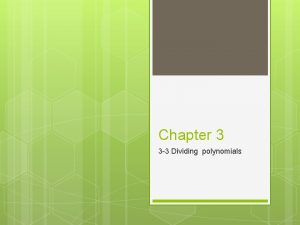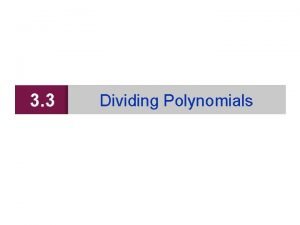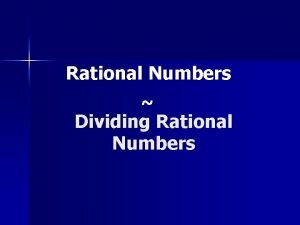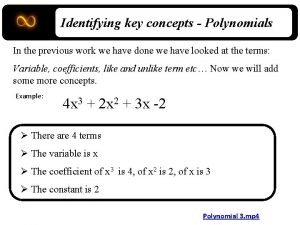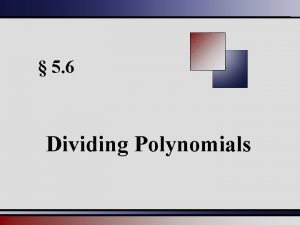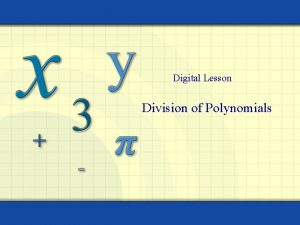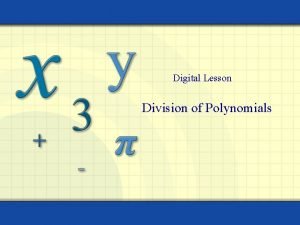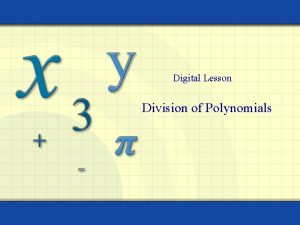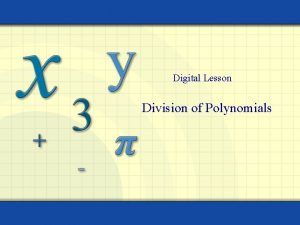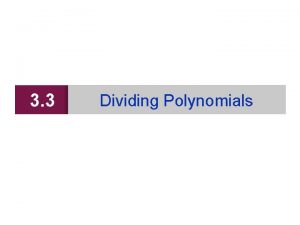Dividing Polynomials How do we use long division








- Slides: 8

Dividing Polynomials • How do we use long division and synthetic division to divide polynomials? Holt Mc. Dougal Algebra 2

Dividing Polynomials You can use synthetic division to evaluate polynomials. This process is called synthetic substitution. The process of synthetic substitution is exactly the same as the process of synthetic division, but the final answer is interpreted differently, as described by the Remainder Theorem. Holt Mc. Dougal Algebra 2

Dividing Polynomials Example 1: Using Synthetic Substitution Use synthetic substitution to evaluate the polynomial for the given value. Holt Mc. Dougal Algebra 2

Dividing Polynomials Example 2: Using Synthetic Substitution Use synthetic substitution to evaluate the polynomial for the given value. Holt Mc. Dougal Algebra 2

Dividing Polynomials Example 3: Using Synthetic Substitution Use synthetic substitution to evaluate the polynomial for the given value. Holt Mc. Dougal Algebra 2

Dividing Polynomials Example 4: Using Synthetic Substitution Use synthetic substitution to evaluate the polynomial for the given value. Holt Mc. Dougal Algebra 2

Dividing Polynomials Example 5: Geometry Application Write an expression that represents the area of the top face of a rectangular prism when the height is x + 2 and the volume of the prism is x 3 – x 2 – 6 x. The volume V is related to the area A and the height h by V the equation V = A h. Rearranging for A gives A = h. 3 – x 2 – 6 x x A(x) = x+2 The area of the face of the rectangular prism can be represented by A(x)= x 2 – 3 x. Holt Mc. Dougal Algebra 2

Dividing Polynomials Lesson 3. 4 Practice C Holt Mc. Dougal Algebra 2
 Dividing polynomials using synthetic division worksheet
Dividing polynomials using synthetic division worksheet Factoring polynomials using synthetic division
Factoring polynomials using synthetic division Rule for long division
Rule for long division How is dividing rational numbers like dividing integers
How is dividing rational numbers like dividing integers Short division vs long division
Short division vs long division Division of polynomials
Division of polynomials Hcf method
Hcf method Factoring polynomials used in real life
Factoring polynomials used in real life What are the concepts in adding polynomials
What are the concepts in adding polynomials
